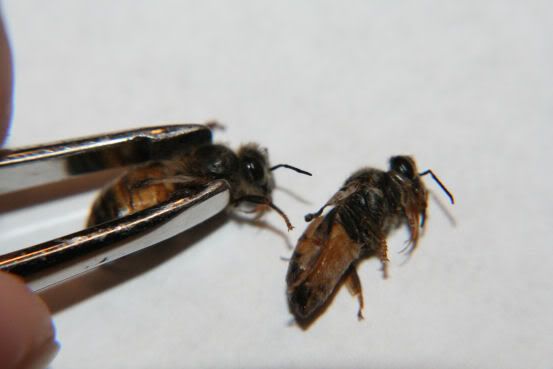Thank you, buzzbee and wildbeekeeper, for both of your replies and for the information that was shared. It was greatly appreciated!
It seemed unusual to me, too, to think that the colony would already have numbers of Varroa high enough to be causing DWV. When researching the symptoms online, though, everything pointed to that so I assumed that was the cause.
And now, I’m just plain confused . . .
--The 24-hour mite count drop was 11
--Yesterday I saw a total of three bees outside of the hive with these shriveled wings (and I saw some of them being ejected from the hive, so I know they are not foragers from another hive with simply ragged wings.)
--This morning I saw another one removed from the hive along with this . . .

This was really a puzzle to me. What would cause this? What stage of development was this bee in?
The fully developed bee with shriveled wings that I saw removed this morning along with the above bee part, I brought inside as well as one that was still on the ground from yesterday . . . both were still alive. We looked them both over carefully with magnifiers for Varroa and didn’t see a one on either of them. Here’s a photo of both of them (sorry it's a little fuzzy) . . .

Buzzbee, as soon as it is warm enough outside again (it’s only in the 50’s today and drizzly), I’ll open up the hive and check some of the drone brood. I sure wish it was warm enough today as I am very curious, and a little anxious, to know what is happening in there.
Is there anything besides DWV that could be causing this? We just manipulated a few frames in the hive on Tuesday . . . could that have stressed the colony and led to the bees not fully developing?